 26 Aug, 2025
26 Aug, 2025
Five Ways to Fix Your Football Manager Tactics Using In-Game Stats
Our FM expert takes you through the five ways to fix your Football Manager tactics using only in game stats.
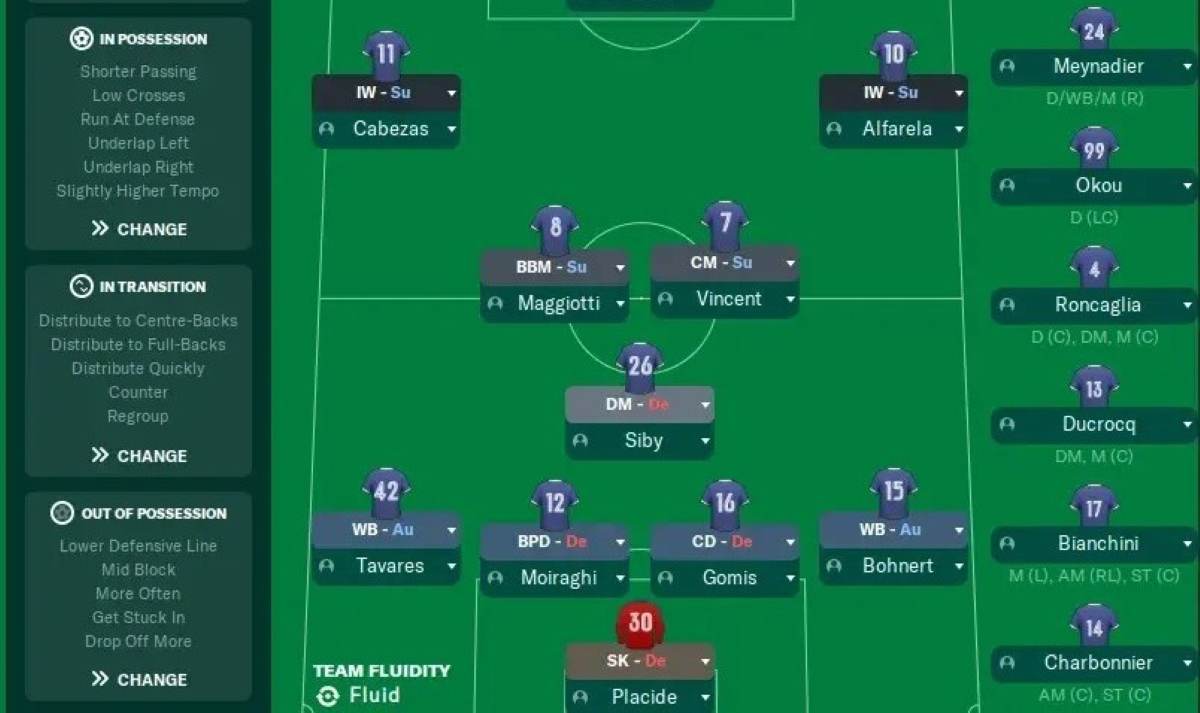
Credit where it’s due: this approach comes from a superb post on Reddit where one manager used nothing but in-game stats – no highlights, no replays, no desperate screaming at the laptop – to turn a failing tactic into one that actually worked.We’re talking about a team that started 1–0–7, averaging less than a goal a game and conceding twice a match, somehow managing to look worse than a Sunday League team playing with a hangover. But by diving into the numbers, the manager found out what was going wrong, fixed it, and turned things around. So here’s how they did it.
The Original Tactic:
The story begins with a 4-3-3 DM Wide counter-attacking system. It was cautious, fluid, and, unfortunately, not very threatening.
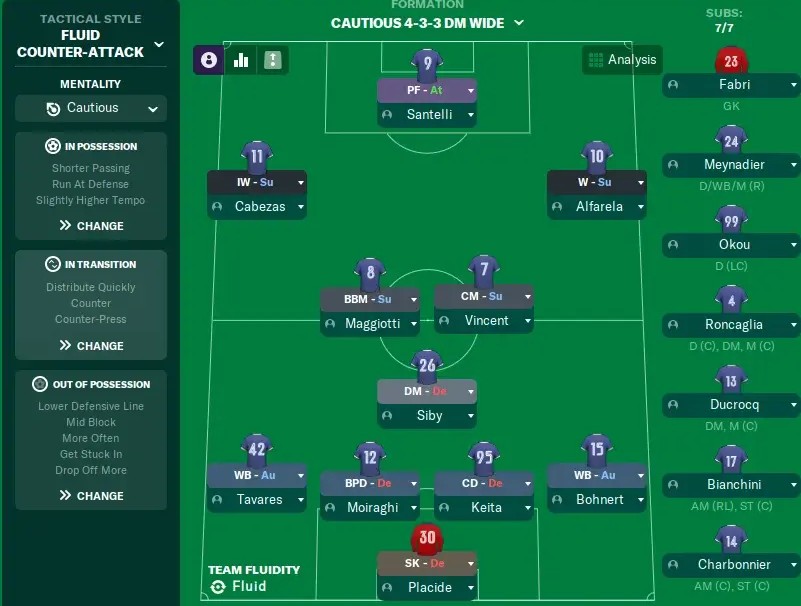
The team couldn’t score. They couldn’t defend. The match ratings were hovering around the dreaded 6.5 territory.
So the manager went hunting for answers in the stats, starting with the most obvious one: goals.2. Shooting, assisting, and scoringFirst question: when we actually score, how are we doing it?
It turned out most goals came from the middle of the pitch, mostly placed shots inside the box, with a smattering of long shots when someone got bored of passing.
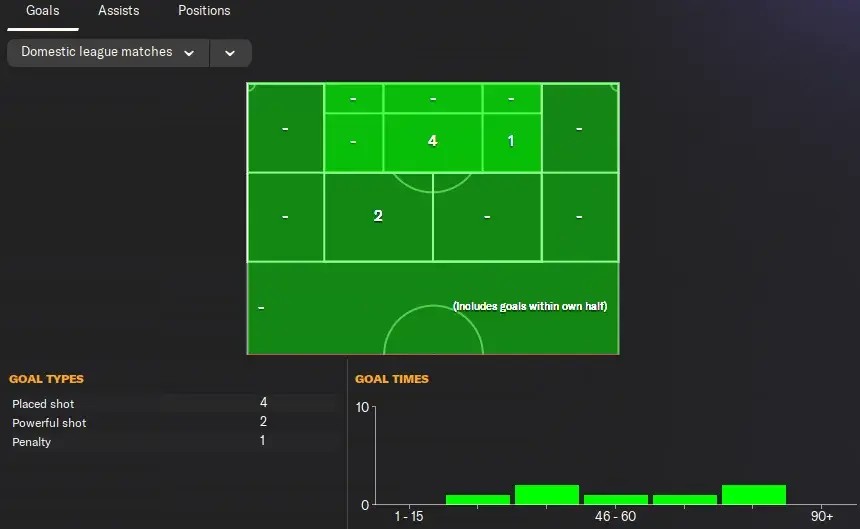
Assists? Again, almost exclusively from central areas.
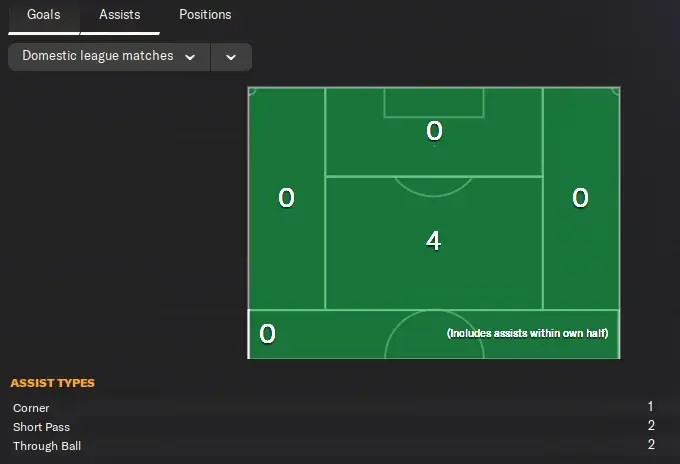
So what wasn’t working?
- 18 crosses per game, completing just 8%.
- 21 headers per game from the front three, winning just 25%.
It was a team seemingly built to cross, with players apparently allergic to winning aerial duels.The conclusion: fewer hopeful balls into the box, more low passes and cutbacks.The changes made:
- Wingers told to cross less often and use low crosses when they did.
- Both switched to inverted roles to encourage cutbacks and runs into the box.
- Full-backs ordered to underlap rather than overlap, again to cut down on hopeless balls from the corner flag.
Touches: Who’s actually involved?
The numbers showed exactly what FM veterans might expect: centre-backs and full-backs saw most of the ball, midfielders a bit less, forwards barely at all. But there were some surprises:
- The striker was averaging 24 touches per game… less than some keepers get on a quiet day.
- The right winger saw loads of the ball, the left barely any.
- The DM looked like he was hiding behind opponents whenever possession came his way.
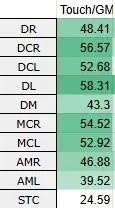
The conclusion: The striker needed to be more involved in build-up, and the left side of the pitch wasn’t pulling its weight.The change: the striker became a Deep-Lying Forward (Attack), dropping in, linking play, hopefully existing for more than the five seconds before shooting wide.
Build-up play:
How do we get forward?
The tactic was meant to be a fluid counter-attack: win the ball, move it quickly, get forward without losing shape. So the manager combined dribbles per 90 and progressive passes per 90 to see who actually advanced the play.
The results?
- Full-backs, especially the left-back, were the main drivers.
- Wingers were secondary creators, with the right side far busier than the left.
- One centre-back was surprisingly progressive, the other apparently thought forward passing was a crime.
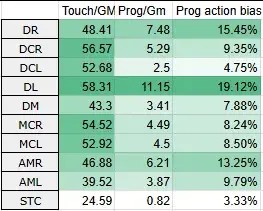
The conclusion:
the tactic was lopsided, the right side doing most of the attacking work while the left mostly spectated.The changes:
- Wider starting positions for wingers (before they cut inside).
- Full-backs told to carry the ball inside more rather than endlessly hugging the touchline.
Turnovers:
This is where things got ugly. The goalkeeper was completing fewer than half his passes (presumably because every goal-kick went straight to the opposition), and the wingers were losing the ball about a third of the time they touched it.
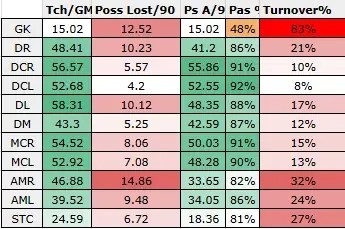
The changes:
- Keeper told to play out to centre-backs and full-backs.
- Full-backs told to cut inside rather than dribble wide into blind alleys.
Defensive performance:
Defensive stats in FM are always tricky, but interceptions and possessions won per 90 gave some clues. Full-backs and wingers were doing fine. The DM? About as much use as a chocolate teapot.
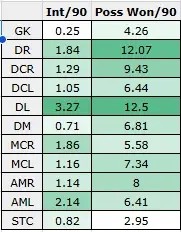
And the goals conceded map? Crosses, through balls, and central passes carving the team open repeatedly.
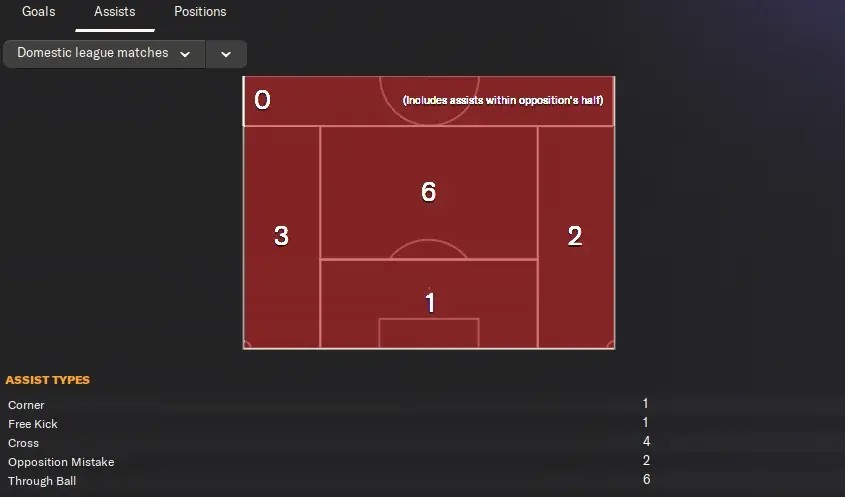
The changes:
- Counter-pressing was scrapped for a more compact regroup approach.
- Wingers told to mark opposition full-backs to stop overlaps.
The new tactic:
After all those tweaks, here’s what version two looked like:
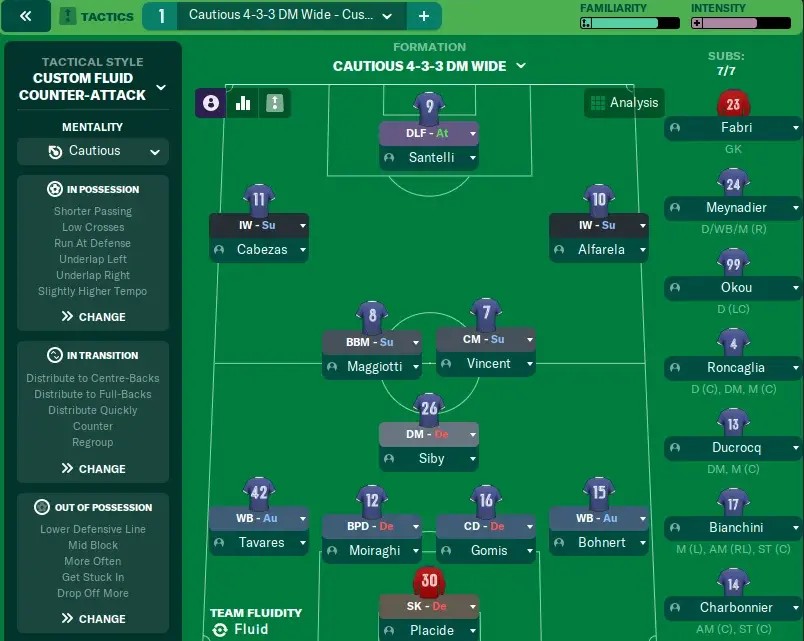
- Low crosses, underlaps, and cutbacks.
- Deeper striker linking play.
- Tighter defensive shape with fewer mad pressing dashes.
But did it work?
The results:
Across the same eight matches, results improved from 1–0–7 to 2–3–3 with better xG numbers and fewer goals conceded.
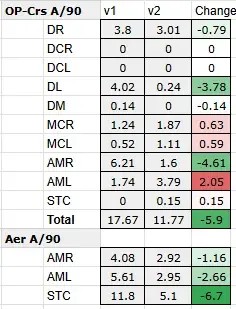
Crosses dropped by six per game. Aerial attempts plummeted by over ten. Expected assists rose, xG rose, goals rose.

Possession? Up by almost 100 passes per game. Turnovers? Down by 7%. Progressive actions? Up by 12 per game.
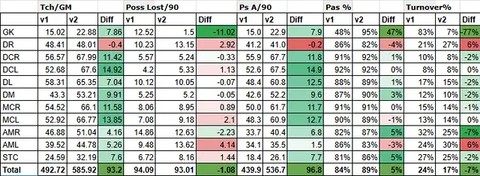
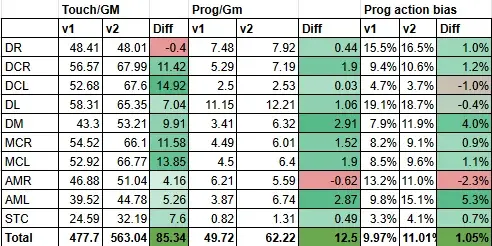
Defensively, the team now gave up far fewer chances from wide areas, forcing opponents through the middle where bodies could crowd them out.
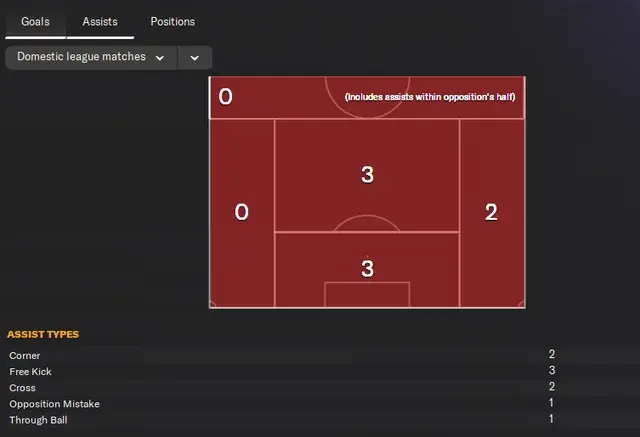
What we learned:
Without watching a single highlight, this manager turned a failing tactic into a functioning one just by reading the numbers properly.
The big lessons:
- If you can’t win headers, stop crossing like a madman.
- Check who’s actually involved in build-up; strikers need touches too.
- Keep an eye on turnovers; possession is precious in FM.
- Defensive shape often matters more than mad pressing.
And most importantly: Football Manager gives you the data to fix problems, if you actually use it.10. The final verdictThe tactic isn’t perfect yet. Set-piece defending still needs work, and there are probably more tweaks to come. But from a team averaging fewer goals than Derby 2011… they’re now creating chances, defending properly, and no longer making the fans cry.So next time your FM save collapses into chaos, don’t just blame your players. Dive into the stats, make changes that actually fit the numbers, and maybe, just maybe, you’ll save yourself from the sack.
If you loved this FM article from our resident FM expert Billy, then you absolutely have to check out his breakdown of the single biggest FM survey ever taken!
Check out our full, in depth FM 26 Release Date article, which is constantly updated when we get news on anything FM 26 related!
